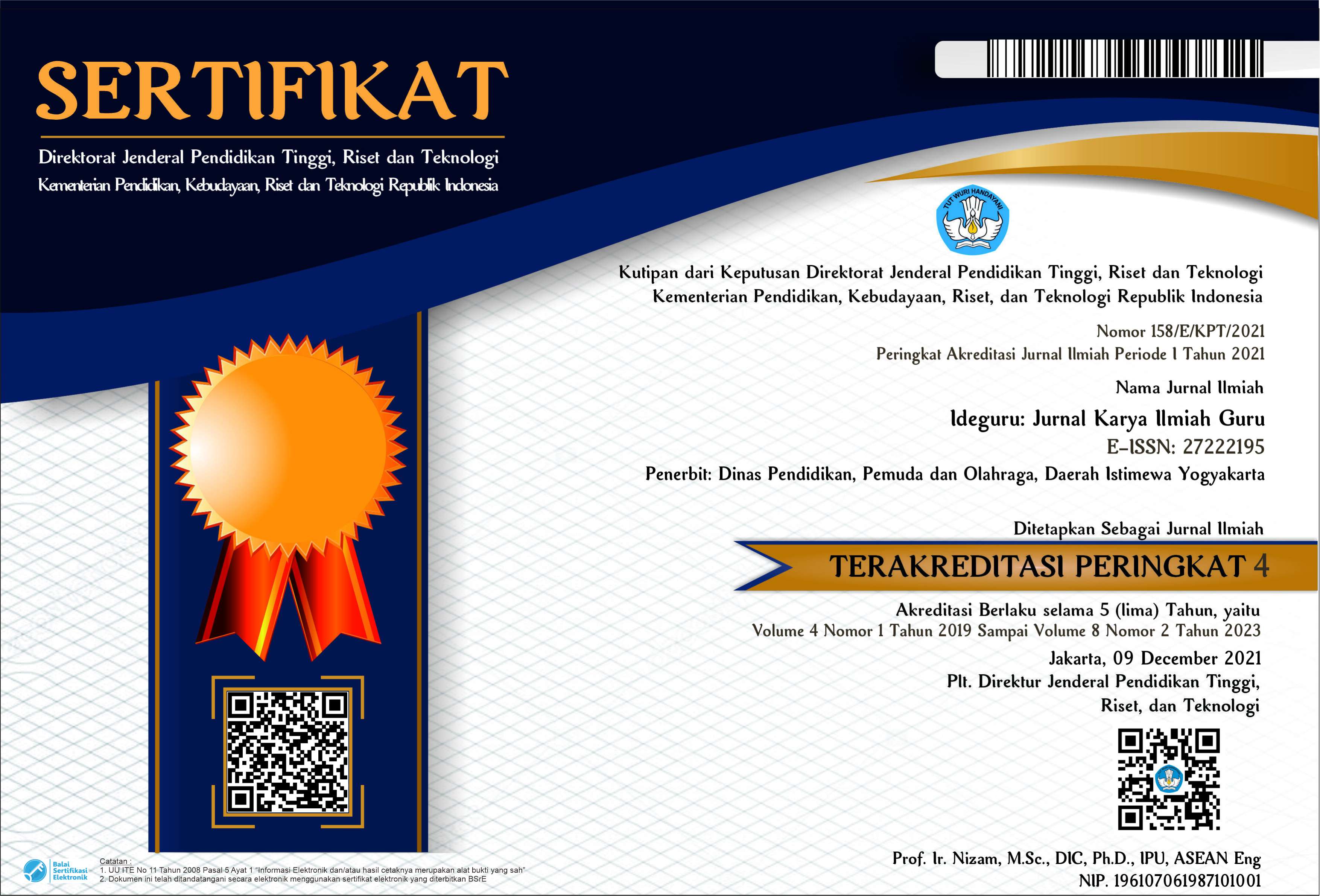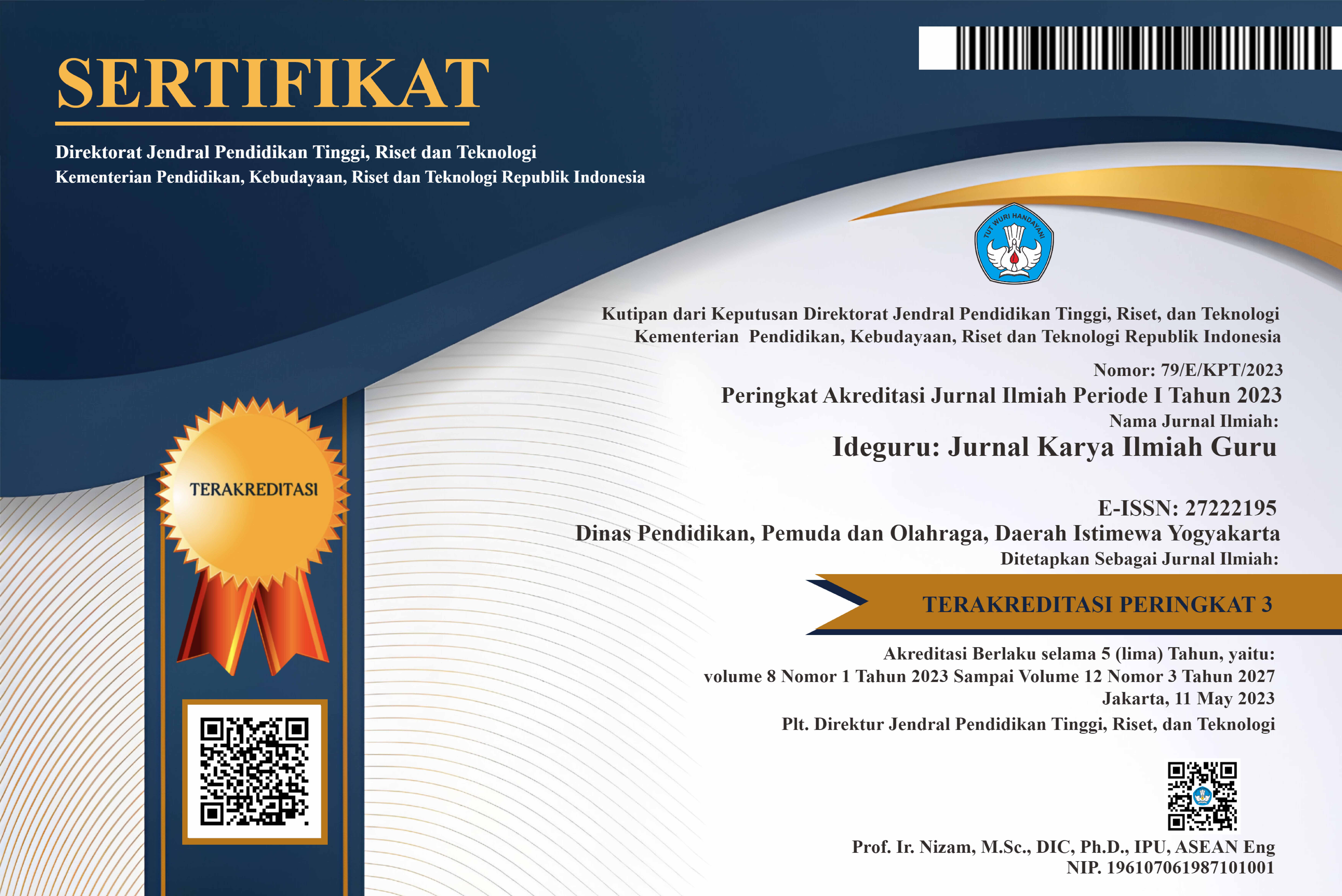Model Pembelajaran Flipped Classroom Berbantuan Google Data Studio untuk Pembuatan Dashboard Data Demografi
Abstract
Basic Competence (4.5) in geography subject (11th grade) expects students to have the skills to present demographic data in the form of maps, tables, graphs and/or images. The learning process can be carried out project-based and facilitated by combining the use of Google Form and Google Data Studio. The best practice subjects were students in class XI IPS 1, XI IPS 2, and XI IPS 3 at Kolese De Britto High School Semester 2 academic year 2021/2022. Data analysis techniques are carried out by reducing data, presenting it in the form of qualitative and quantitative data, and ending with conclusions. Best practice results show that the flipped classroom model assisted by Google Data Studio can overcome some of the online and hybrid learning (PTMT. This learning model provides an in-depth experience for students in several stages, collecting, processing, and presenting demographic data. Through the learning process students experienced High Order Thinking Skills (HOTS) to levels evaluating and creating. After participating in learning the most dominant skills increased were conducting interviews with informants (76.5%), collaborating to collect demographic data (76.5%), processing data (72.5%), and analyzing demographic data presented in dashboards (65.7%). Learning outcomes show a good value with an average of 89.2.
PDF Downloads
Copyright (c) 2023 Thomas Dannar Sulistyo

This work is licensed under a Creative Commons Attribution 4.0 International License.

 DOI:
DOI:














